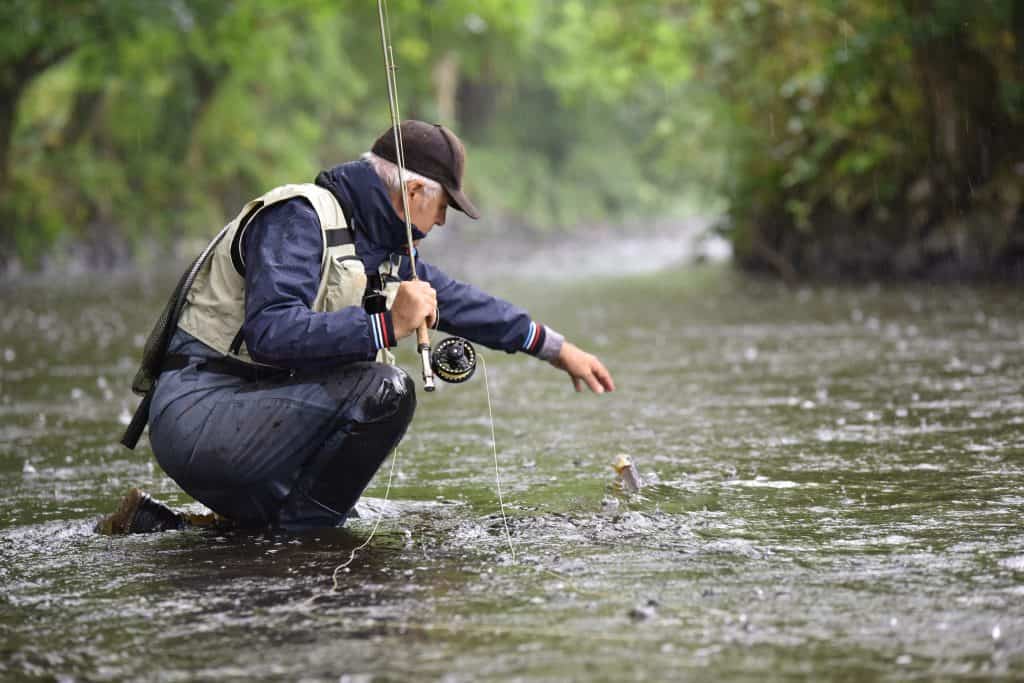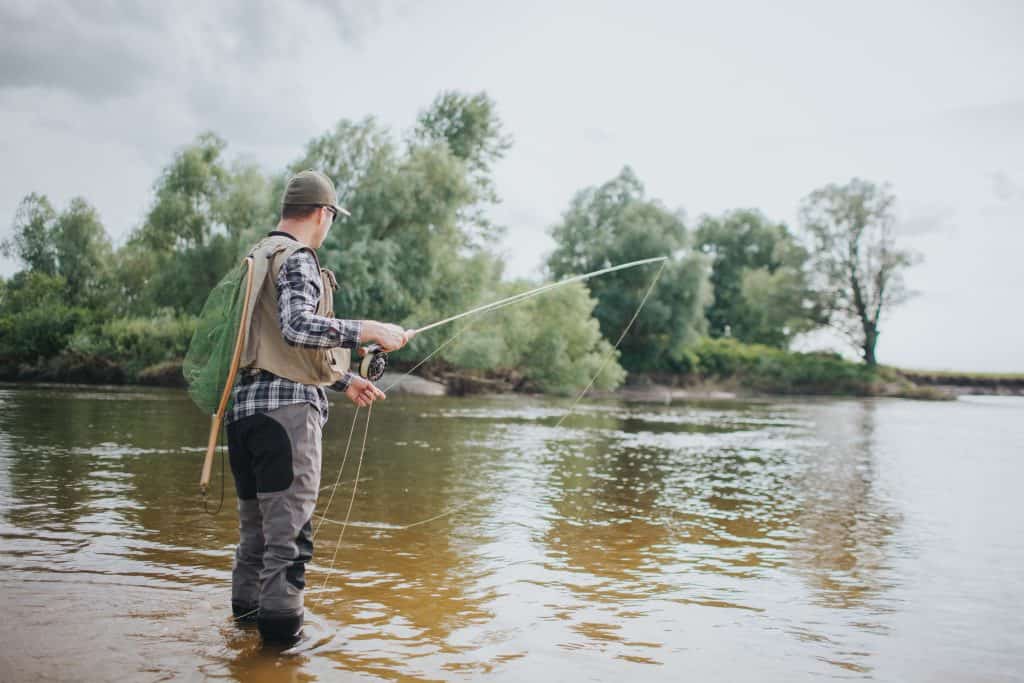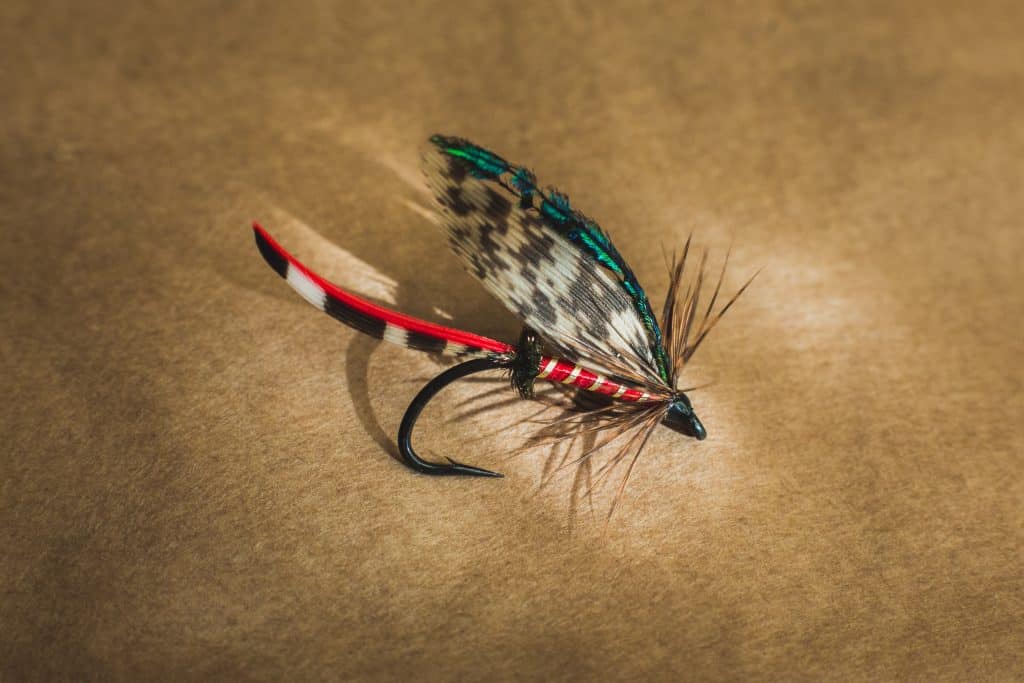
The equipment and set-up for fly fishing are a little different from that of other types of fishing. With each new piece of equipment, you may be a little confused about what something, like a leader, actually is!
So, what is a fly fishing leader? A fly fishing leader is what connects the fishing line to the fly. The leader works closely with the tippet and it tapers down to the fly so that the cast is more smooth. The leader is typically 9 ft long for most lines.
Since the leader works together with each of the different parts of line, rod, and reel it is important to understand each of these pieces and how they all come together to affect your cast. Continue reading below to find out how casting a fly line with a leader really works!
What Is a Leader and Where Does it Go?
If you have gone regular spin fishing or bait casting, than you probably aren’t sure what a leader is, where it goes, and what its actual purpose is.
To understand what a leader is and what its purpose is, you need to know how fly fishing is different from regular types of fishing.
In regular fishing, you are casting a heavy lure with a lighter line. Since the lure is heavy the line doesn’t need to have much weight in order to carry the lure further distances.
However, in fly fishing, you are casting a tiny, lightweight fly. In order to cast this tiny fly, you use a heavier line.
Since the purpose of fly fishing is to deceive the fish into believing it is a real fly in the water, you want the fly you cast to land properly on the water.
To achieve this effect, fly fishermen use what is called a leader.
The leader connects to the fly line and the tippet to create a lighter more natural descent for the fly.
As well as creating a more natural landing on the surface of the water, a leader is often transparent, unlike the fly line. The transparency of the leader separates the fly from the line and removes any suspicion the fish may be having of your fly.
Leaders are typically made of a nylon mono-filament and most often range anywhere from 7.5 feet to 9 feet.
You can purchase a leader with your fly line or you can find or make your own! Be sure when choosing a leader that you find one with the correct length.
Now that you know what a leader is and what role it plays in your fly fishing trip, continue reading below to learn more about the rest of the gear needed for fly fishing!
What is Fly Line Taper?
A fly line taper involves where the weight of the line is created. Fly line tapers come in many sizes and the choice of taper you make depends on the type of fish you want to catch. There are four main types of taper: the level taper, the weight forward taper, the double taper, and the running line shooting head taper.
The level taper is shaped just like a level straight and flat with no shape to it except in models it looks a little bit like a rectangle.
The weight forward taper is really self-explanatory. It puts the weight more forward in the line. The weight forward taper is preferred in many areas because of its ability to withstand the heavy winds.
The double taper is suited for smaller streams. It allows for the weight to be placed in the middle and the rest of the line to be smoother. This also doubles the life of the leader because there is less stress on the line.
Shooting headlines are designed for you to have the ability to change the head of the line. It will come with a loop connection reducing friction in the rod.
What Is a Fly Line?

A fly line simply put is the line on your fly fishing rod. It allows for you to send the fly used to catch fish into the water and then is pulled back in when you have caught something.
Fly lines come in a variety of colors ranging from white and black all the way to neon pink. When you choose your line make sure that you choose one you know you will be able to see.
If you can’t see the line, there is no point because you
Fish will not be able to see your neon pink line. It will just look black to them. There is also a lot more that goes into the fly line such as weight and whether or not it will sink or float.
Fly lines will come with a weight ranking also known as AFTM. When you get the line you need to make sure that the weight ranking matches the weight of your rod.
Some may wonder why their line isn’t floating perfectly on the water and is instead sinking to the bottom. This is caused by the third layer of the fly line.
A fly line is made up of three layers. These layers include the outer layer, the inner layer, and the core. The core is the most important of the three layers because it decides rather your line floats or sinks.
The core is made up of tiny lines that have been braided and then coated in clear plastic. Depending on the type of plastic that your core is coated it will be the deciding factor for whether the line floats or sinks.
What Is a Tippet?
A tippet is what allows your leader to have a longer life and keeps the leaders’ line from getting worn. A tippet is where you will tie your fly. Typically the tippet is only 2-4 feet long coming in as the shortest part of the line.
When you are looking for a tippet to use you will want to find the lightest in weight and strongest in endurance tippet you can find. The lightest is the most important part because if you have a heavy tippet, it will sink into the water and will spook the fish.
What Is a Fly?

The fly is what attracts the fish to your rod allowing them to bite and then the fishermen catch them. Flies come in a variety of shapes and sizes. The shape doesn’t really matter. However, the size of the fly plays a huge part in whether or not the fish will bite.
If you are confused on how big your fly should be compared to your pole, typically the manufacturer will send a paper with size requirements with the fly.
Related Questions
How long should my leader be for fly fishing? Fly fishing leaders range anywhere from 6 ft all the way to 12 ft. The size of the leader depends on the weather conditions and the type of fish you are trying to catch. Typically go with the 9 ft leader.
What are tippet rings? A tippet ring is small, strong, and lightweight. It is a ring that attaches to the leader allowing the leader to turn over perfectly. They also allow for fly fishermen to fish using dry flies.
How do you tie a tippet to a leader? First, you will place the leader and the tippet side by side. Next, you will fold both the lines together to form a loop. When you have the loop you’ll tie a double overhand not and then repeat one more time.
